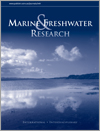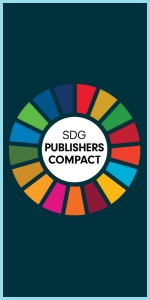Marine and Freshwater Research
Volume 76
Number 14 2025
The Sydney rock oyster (Saccostrea glomerata) is an iconic Australian native species of great commercial and ecological significance. Amid debate over aquaculture, the role of the S. glomerata industry in safeguarding Australia’s estuaries has been overlooked. This paper explores how, for over 150 years, S. glomerata has been central in monitoring, understanding and protecting one of NSW’s greatest assets, our estuarine ecosystems.
Approximately 200 × 106 m3 of agricultural drainage water have been discharged annually to the Wadi El-Rayan depression (Egypt) since 1973, creating two artificial lakes. Among other services, they supported high bird diversity formation and the development of multi-species aquaculture. We provide new information on long-term changes in both lakes from 1984 to 2022, which gives a better understanding of these unique ecosystem dynamics; this is valuable for the management of technogenic waterbodies and the development of sustainable polyaquaculture in in arid areas.
This study looked at the genetic patterns of freshwater perches from the south-western corner of Australia. It showed that this region harbours undescribed species and discrete subpopulations, all being associated with past landscape or current environmental conditions. The research helps improve understanding of these fish, guiding efforts to protect aquatic habitats and conserve vulnerable populations as environmental changes affect the region.
To solve the problem of nitrogen and phosphorus pollution in rice field drainage, our research explored how to use matrix dams in drainage ditches. Using numerical models, we found that matrix dams can significantly reduce water flow velocity and pollutant concentrations. This provides a very important method for protecting water bodies and improving the environment.
This article belongs to the collection: Global perspectives: sustainable management of freshwater aquatic ecosystem services and water resources.
Genetic variation of marine species across a wide area can show how the environment can shape biodiversity. Sand dollars, for example, often show regional isolation but local connectivity. This study found that the New Zealand sand dollar, Fellaster zelandiae, is sister to its Australian counterpart, Arachnoides placenta. Fellaster showed strong connectivity across the entire country. Small-scale variation between northern and southern populations appears consistent with biogeographic patterns seen in other coastal species in New Zealand.





